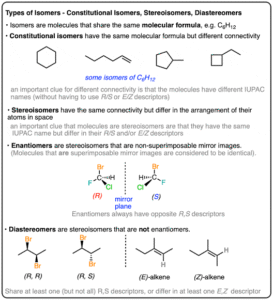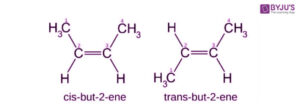Back to: Organic Chemistry 100 Level
Welcome to class!
Hello, young scientist! It’s great to have you here once again. You’re doing so well on your learning journey, and today, we’re going to unlock another exciting topic in Organic Chemistry—Isomerism. You may not know this, but isomerism is the reason why two things can look alike but behave totally differently—just like identical twins who have different personalities! Let’s find out what makes this topic so fascinating.
Isomerism In Organic Chemistry
What is Isomerism?
In simple terms, isomerism happens when two or more compounds have the same molecular formula (same number and type of atoms), but different structures or arrangements of atoms.

So, they’re like different houses built with the same number of blocks—but arranged differently to give completely different styles or features!
These different versions of a compound are called isomers.
Types of Isomerism
There are two major types of isomerism in Organic Chemistry:
1. Structural Isomerism (Constitutional Isomerism)
This occurs when isomers have the same molecular formula, but the atoms are connected differently.
Let’s say you’re cooking with rice. You can make jollof rice or fried rice—it’s still rice, but prepared in a different way. That’s how structural isomers behave.
Types of structural isomerism:
Chain isomerism: Different arrangements of the carbon chain
Example: Butane and 2-methylpropane (C₄H₁₀)
Position isomerism: Same carbon chain but functional group is in a different position
Example: Butan-1-ol and Butan-2-ol
Functional group isomerism: Same formula but different functional groups
Example: Ethanol (an alcohol) and dimethyl ether (an ether) – both C₂H₆O
Tautomerism (a special kind): A dynamic form of isomerism where two forms exist in equilibrium (often keto-enol forms)
2. Stereoisomerism
This is when isomers have the same structural formula, but their atoms are arranged differently in space.

Like two people with the same body shape and clothes, but standing in different poses!
Types of stereoisomerism:
Geometric (cis-trans) isomerism: Found in alkenes or ring structures where rotation is restricted
Cis: same groups on the same side
Trans: same groups on opposite sides
Example: Cis-but-2-ene and trans-but-2-ene
Optical isomerism: Involves compounds that are mirror images of each other but cannot be superimposed
Example: Lactic acid enantiomers
Just like your left and right hands—they look alike but don’t overlap perfectly.
Why Isomerism Matters
Isomerism affects physical and chemical properties. For example:
One isomer of a drug might cure a disease, while another may have no effect or even cause harm.
Different isomers can have different smells, boiling points, or tastes.

It’s why understanding isomers is very important in medicine, food science, and industry.
Summary
- Isomers have the same molecular formula but different structures.
- Structural isomerism includes chain, position, and functional group isomerism.
- Stereoisomerism includes geometric (cis-trans) and optical isomerism.
- Isomerism explains how similar-looking compounds can behave very differently.
Evaluation
- What is isomerism?
- Name two main types of isomerism.
- Give one example of chain isomerism.
- What is the difference between cis and trans isomers?
- Why is optical isomerism compared to left and right hands?
Excellent work today, champion! You’ve just learned how something as simple as rearranging atoms can change everything about a compound. Keep asking questions, stay curious, and remember—with Afrilearn, your future is as bright as your passion for learning! Keep going, you’re doing wonderfully!
